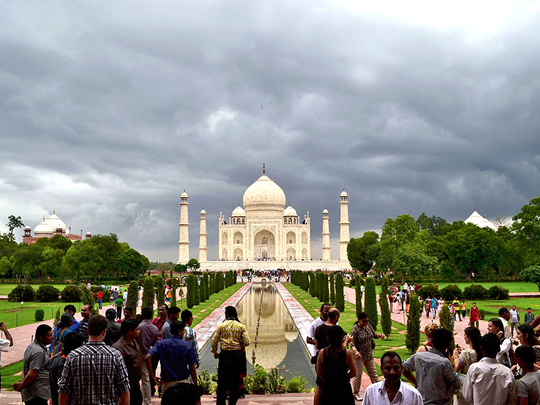
New Delhi: The apex Supreme Court on Wednesday asked Uttar Pradesh Sunni Waqf Board to produce documents bearing the signature of Mughal emperor Shah Jahan to prove that the 17th century monument belonged to the body.
“Who in India will believe that the Taj Mahal belongs to the Waqf Board? How did Mughal emperor Shah Jahan sign the waqfnama? When was it given to you,” a three-judge bench, comprising Chief Justice of India Justice Dipak Misra and Justices A M Khanwilkar and DY Chandrachud, asked the Board.
The court gave a week’s time to Waqf Board to produce signature of Shah Jahan.
“Taj Mahal belonged to the Waqf Board since Shah Jahan’s time and it is a property under the Waqfnama,” Board’s advocate VV Giri told the apex court.
The claim has been challenged by Archaeological Survey of India (ASI). In 2010, ASI had petitioned SC against the Board’s 2005 decision ordering that Taj be registered as Waqf property. ASI got a stay on that order.
“There is no existence of waqfnama at that time to prove that emperor Shah Jahan gave away the property to the Waqf Board. Under the 1858 proclamation, the properties taken over from the last Mughal emperor, Bahadur Shah Zafar, by the British vested with the Queen. By the 1948 Act, the buildings were taken over by the Indian government,” ASI’s advocate ADN Rao told Gulf News.
The SC bench told the Board that the 17th century monument was passed on to East India Company after the fall of Mughal empire. Later after independence, it was vested in ASI.
“Shah Jahan used to view the Taj Mahal from his cell in Agra Fort where he was sent to serve house arrest by his son Aurangzeb. How did he sign the waqfnama while in custody? Show us the documents signed by the emperor,” CJI said.
He demanded to see the signature of Shah Jahan on the next date of hearing to prove the Board’s claim.
Earlier last month, the SC had directed the UP state government to place before it a draft of vision document on protection and preservation of Taj and environment in the Taj Trapezium Zone (TTZ).












